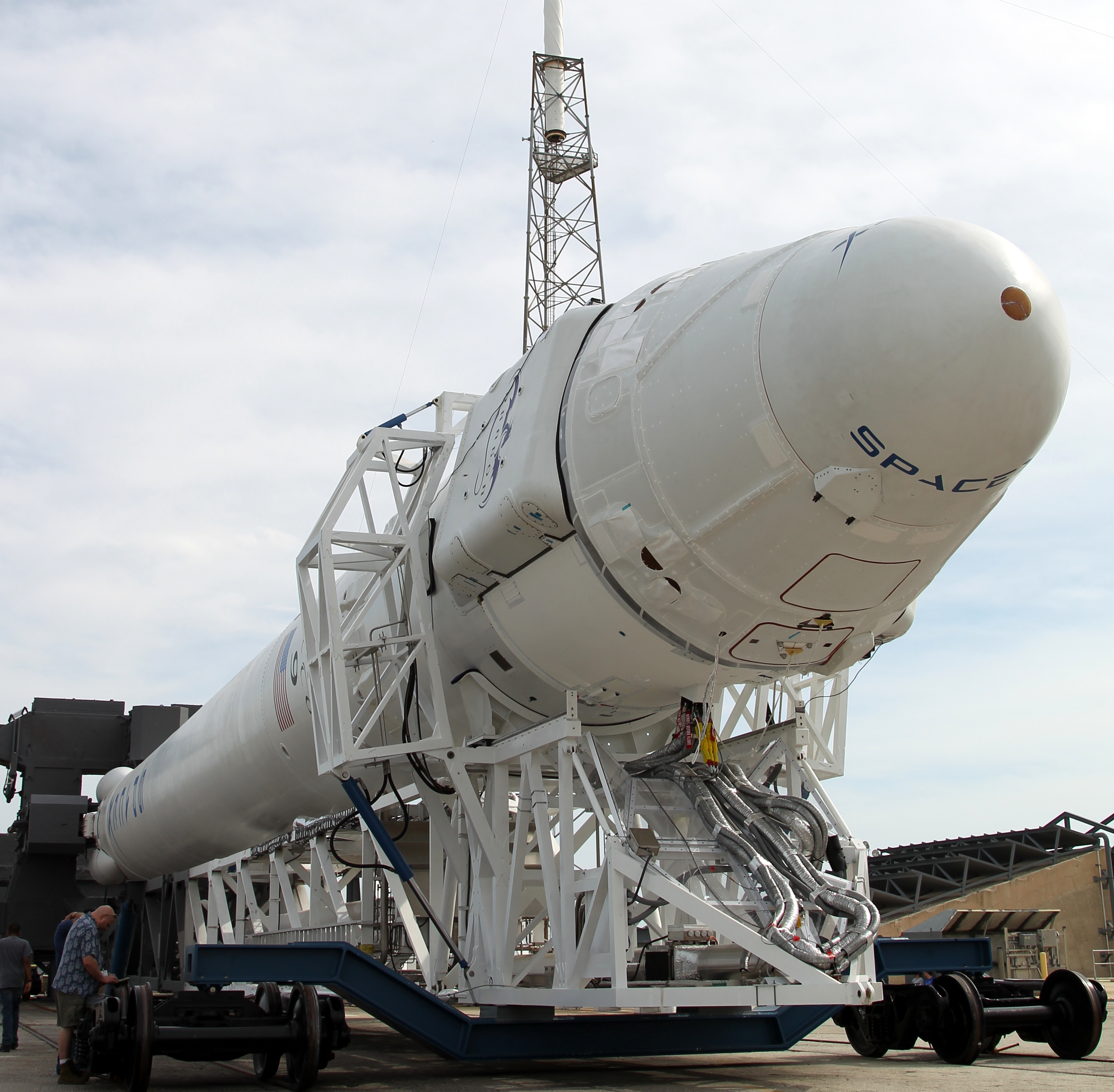Wish you could be on the International Space Station right now, helping to unload the SpaceX Dragon capsule that is berthed to the Harmony Node? A new interactive panorama from SpaceX allows the closest experience of being inside Dragon. Inside, you can see all the storage compartments, and the panorama lets you zoom around inside as if you were floating in Zero-G. If you watch out the window port, the view will change from seeing Earth, to having the protective shutters closed and then (sadly) you end up back on Earth inside the SpaceX Hanger at Cape Canaveral. The panorama is a fun Friday diversion, but make sure you share it with your favorite budding astronaut — kids will love it! Click on the image above to get to the panorama, or use this link.
Falcon 9 Experienced Engine Anomaly But Kept Going to Orbit
During last night’s launch of the Dragon capsule by SpaceX’s Falcon 9 rocket, there was an anomaly on one of the rocket’s nine engines and it was shut down. But Dragon still made it to orbit – just a little bit later than originally expected. At about 1:20 into the flight, there was a bright flash and a shower of debris. SpaceX’s CEO Elon Musk issued a statement about the anomaly saying:
“Falcon 9 detected an anomaly on one of the nine engines and shut it down. As designed, the flight computer then recomputed a new ascent profile in realtime to reach the target orbit, which is why the burn times were a bit longer. Like Saturn V, which experienced engine loss on two flights, the Falcon 9 is designed to handle an engine flameout and still complete its mission. I believe F9 is the only rocket flying today that, like a modern airliner, is capable of completing a flight successfully even after losing an engine. There was no effect on Dragon or the Space Station resupply mission.”
UPDATE (2 pm EDT 8/10): SpaceX has now provided an update and more information: the engine didn’t explode, but (now updated from a previous update), “panels designed to relieve pressure within the engine bay were ejected to protect the stage and other engines.” Here’s their statement:
Approximately one minute and 19 seconds into last night’s launch, the Falcon 9 rocket detected an anomaly on one first stage engine. Initial data suggests that one of the rocket’s nine Merlin engines, Engine 1, lost pressure suddenly and an engine shutdown command was issued. We know the engine did not explode, because we continued to receive data from it. Panels designed to relieve pressure within the engine bay were ejected to protect the stage and other engines. Our review of flight data indicates that neither the rocket stage nor any of the other eight engines were negatively affected by this event.
As designed, the flight computer then recomputed a new ascent profile in real time to ensure Dragon’s entry into orbit for subsequent rendezvous and berthing with the ISS. This was achieved, and there was no effect on Dragon or the cargo resupply mission.
Falcon 9 did exactly what it was designed to do. Like the Saturn V (which experienced engine loss on two flights) and modern airliners, Falcon 9 is designed to handle an engine out situation and still complete its mission. No other rocket currently flying has this ability.
It is worth noting that Falcon 9 shuts down two of its engines to limit acceleration to 5 g’s even on a fully nominal flight. The rocket could therefore have lost another engine and still completed its mission.
We will continue to review all flight data in order to understand the cause of the anomaly, and will devote the resources necessary to identify the problem and apply those lessons to future flights. We will provide additional information as it becomes available.
In their initial press release following the launch SpaceX had originally described the performance of Falcon 9 as nominal “during every phase of its approach to orbit.”
During the press briefing following the launch SpaceX President Gwynne Shotwell replied to a question about the flash and said “I do know we had an anomaly on Engine 1, but I have no data on it. But Falcon 9 was designed to lose engines and still make mission, so it did what it was supposed to do. If you do end up with issues, you burn longer to end up where you need to go.”
SpaceX’s website also mentions this capability, saying, “”This vehicle will be capable of sustaining an engine failure at any point in flight and still successfully completing its mission. This actually results in an even higher level of reliability than a single engine stage.”
Dragon made it to orbit about 30 seconds later than originally planned, but Shotwell said it made it into the correct orbit, “within two or three kilometers in both apogee and perigee and Dragon is now on its way to Station.” The anomaly happened right at the time of Max-Q, just as the vehicle went supersonic.
The Space Shuttle was also designed to make it into orbit even if one of its three engines failed – after a certain point in the flight – and did so at least once to this reporter’s knowledge, on STS-51-F which resulted in an Abort To Orbit trajectory, where the shuttle achieved a lower-than-planned orbital altitude.
This was the first time SpaceX made lift-off at their originally planned “T-0” launch time, Shotwell noted. And they also deployed a tag-along, secondary payload in addition to the Dragon capsule, a prototype commercial communications satellite for New Jersey-based Orbcomm Inc. However, A report by Jonathan McDowell indicates the Orbcomm satellite is being tracked in low orbit instead of its elliptical target orbit because the Falcon 9 upper stage failed its second burn. (More info here from Jonathan’s Space Report).
SpaceX will undoubtedly review the anomaly, and we’ll provide more information about it when available.
SpaceX Launches to the International Space Station. Credit: NASA
Liftoff! SpaceX Launches First Official Commercial Resupply Mission to ISS
The launch of SpaceX’s Falcon 9 rocket sending the Dragon capsule to orbit. Credit: KSC Twitter Feed
SpaceX has successfully launched the first official Cargo Resupply Services (CRS) mission to the International Space Station. The commercial company’s Falcon 9 rumbled rocket to life at 8:35 EDT on Oct 7 (00:35 UTC Oct. 8) in a picture perfect launch, sending the Dragon capsule on its way in the first of a dozen operational missions to deliver supplies to the orbiting laboratory. The launch took place at Launch Complex 40 at Cape Canaveral Air Force Station in Florida, just a few miles south of the space shuttle launch pads.
“This was a critical event for NASA and the nation tonight,” said NASA Administrator Charlie Bolden after the launch. “We are once again launching spacecraft from American soil with supplies that the ISS astronauts need.”
Watch the launch video below:
All the major milestones of the launch ticked off in perfect timing and execution, and the Dragon capsule is now in orbit with its solar arrays deployed. The Dragon capsule separated from the Falcon 9 about 10 minutes and 24 seconds after liftoff. Dragon should arrive at the ISS on Oct. 10 and the crew will begin berthing operations after everything checks out.
All three members of the current ISS crew were able to watch the launch live via a NASA uplink to the ISS, and Commander Suni Williams passed on her congratulations to the SpaceX team, saying “We are ready to grab Dragon!”
Williams and astronaut Akihiko Hoshide will use the CanadArm 2 to grapple the Dragon capsule around 7:22 a.m. EDT (11:22 UTC) Wednesday, moving it to a berthing at the Earth-facing port of the forward Harmony module.
Even though SpaceX sent the Dragon to the ISS in May, that was considered a demonstration flight and this flight is considered the first operational mission.
“No question, we are very excited,” said SpaceX President Gwynne Shotwell just before the launch. “Everyone was very excited in May and we are very much looking forward to moving forward with the operational missions.”
Dragon is carrying approximately 450 kg (1,000 pounds) of supplies, including food, water, scientific experiments and Space Station parts. There are also 23 student experiments from the Student Spaceflight Experiments Program (SSEP) involving 7,420 pre-college students engaged in formal microgravity experiment design, according to SSEP director Dr. Jeff Goldstein.
SpaceX and NASA revealed this weekend a special treat is on board a new freezer called GLACIER (General Laboratory Active Cryogenic ISS Experiment Refrigerator): Blue Bell ice cream, a brand that is a favorite of astronauts training at the Johnson Space Center in Houston. The freezer will be used to return frozen science experiments to Earth.
In the next three days, Dragon will perform systems checks, and start a series of Draco thruster firings to reach the International Space Station.
Dragon will return a total of 750 kg (1,673 pounds) of supplies and hardware to the ground. NASA says Dragon’s capability to return cargo from the station “is critical for supporting scientific research in the orbiting laboratory’s unique microgravity environment, which enables important benefits for humanity and vastly increases understanding of how humans can safely work, live and thrive in space for long periods. The ability to return frozen samples is a first for this flight and will be tremendously beneficial to the station’s research community. Not since the space shuttle have NASA and its international partners been able to return considerable amounts of research and samples for analysis.”
Dragon is currently scheduled to return to Earth at the end of the month, splashing down in the Pacific Ocean on October 29.
1000 SpaceX employees watch Falcon 9 and Dragon launch, at the Hawthorne, California headquarter. Credit: SpaceX
Taking a cue from the Mars Science Laboratory “Mohawk Guy” this SpaceX employee watching from Hawthorne sports a blue mohawk with a SpaceX logo shaved on her head. Credit: SpaceX.
Here’s a shorter video version of the launch from SpaceX:
How Much Would it Cost to Launch Your House into Space?
House in Space, from a NASA Remix Challenge. Credit: Cookieater2009 on Flickr.
Some people like an adventure, but don’t want to leave their home behind — like old Carl in the movie “Up.” So, if you wanted to go to space and take your domicile with you, what would it take? Certainly more than thousands of balloons; it would likely take millions of dollars. The folks at the housing blog Movoto Real Estate wanted to know just how much, saying they were inspired by the upcoming commercial launch by SpaceX to the International Space Station. Using launch costs for the Falcon Heavy, they computed an approximate weight-to-square-foot ratio of 200 pounds per square foot for a single story house and put in other variables. They built a “Home Blastoff Calculator” — an interactive infographic that allows anyone to figure out how much it cost to launch their house into space — noting that they computed weight, not volume. While certainly not feasible, it’s an interesting and fun concept, and the infographic also provides comparisons of launching other things into space, like dogs or chimps, or what it takes to put people on the Moon.
Compute your costs below:
Hangout with Elon Musk
SpaceX’s Elon Musk with the Falcon rocket. Credit: SpaceX
You can now tell everyone that SpaceX CEO Elon Musk is a close personal friend and that you are going to hang out with him on Friday. A Google+ Hangout, that is. Musk and NASA Administrator Charlie Bolden will be part of a G+ Hangout, and will answer questions submitted by viewers. They will also discuss the upcoming launch of SpaceX’s first contracted cargo resupply flight to the International Space Station. The Hangout will take place on Friday, October 5, 2012 from 17:00-17:30 UTC (1-1:30 p.m. EDT). SpaceX’s Falcon 9 rocket and its Dragon cargo spacecraft are scheduled to lift off at 00:35 UTC on Monday, October 8 (8:35 p.m. EDT, Sunday, Oct. 7) from at Cape Canaveral Air Force Station in Florida.
Bolden and Musk will talk about the flight, which will be the first of 12 contracted for NASA by SpaceX to resupply the space station. Followers on Twitter may ask a question in advance of or during the event using the hashtag #askNASA. On NASA Facebook and Google+, a comment thread will open for questions on the morning of the event. To join the hangout, visit the NASA’s Google+ page.
Antares Commercial Rocket Reaches New Atlantic Coast Launch Pad
Image Caption: Antares Rocket At Wallops Flight Facility Launch Pad. Orbital Sciences Corporation’s Antares rocket at the launch pad at NASA’s Wallops Flight Facility. In a few months, Antares is scheduled to launch a cargo delivery demonstration mission to the International Space Station as part of NASA’s Commercial Orbital Transportation Services (COTS) program. Credit: NASA
At long last, Orbital Sciences Corporation has rolled their new commercially developed Antares medium class rocket to the nation’s newest spaceport – the Mid-Atlantic Regional Spaceport (MARS) at Wallops Island,Va – and commenced on pad operations as of Monday, Oct 1.
The long awaited rollout marks a key milestone on the path to the maiden test flight of the Antares, planned to blast off before year’s end if all goes well.
This is a highly noteworthy event because Antares is the launcher for Orbital’s unmanned commercial Cygnus cargo spacecraft that NASA’s hopes will reestablish resupply missions to the International Space Station (ISS) lost with the shuttle’s shutdown.
“MARS has completed construction and testing operations on its launch complex at Wallops Island, the first all-new large-scale liquid-fuel launch site to be built in the U.S. in decades,” said David W. Thompson, Orbital’s President and Chief Executive Officer.
“Accordingly, our pad operations are commencing immediately in preparation for an important series of ground and flight tests of our Antares medium-class launch vehicle over the next few months. In fact, earlier today (Oct. 1), an Antares first stage test article was transported to the pad from its final assembly building about a mile away, marking the beginning of full pad operations.”
Antares 1st stage rocket erected at Launch Pad 0-A at the Mid-Atlantic Regional Spaceport (MARS) at NASA Wallops Flight Facility in Virginia. Credit: NASA
In about 4 to 6 weeks, Orbital plans to conduct a 30 second long hot fire test of the first stage, generating a total thrust of 680,000 lbs. If successful, a full up test flight of the 131 foot tall Antares with a Cygnus mass simulator bolted on top is planned for roughly a month later.
An ISS docking demonstration mission to the ISS would then occur early in 2013 which would be nearly identical in scope to the SpaceX Falcon 9/Dragon demonstration flight successfully launched and accomplished in May 2012.
The first commercial resupply mission to the ISS by SpaceX (CRS-1) is now set to lift off on Oct. 7 from Cape Canaveral, Florida.
The 700,000 lb thrust Antares first stage is powered by a pair of Soviet era NK-33 engines built during the 1960 and 1970’s as part of Russia’s ill-fated N-1 manned moon program. The engines have since been upgraded and requalified by Aerojet Corp. and integrated into the Ukrainian built first stage rocket as AJ-26 engines.
Image Caption: Antares first stage arrives on the pad at NASA_Wallops on Oct. 1. First stage approaching adapter ring on the right. Credit: NASA
NASA awarded contracts to Orbital Sciences Corp and SpaceX in 2008 to develop unmanned commercial resupply systems with the goal of recreating an American capability to deliver cargo to the ISS which completely evaporated following the forced retirement of NASA’s Space Shuttle orbiters in 2011 with no follow on program ready to go.
“Today’s (Oct. 1) rollout of Orbital’s Antares test vehicle and the upcoming SpaceX mission are significant milestones in our effort to return space station resupply activities to the United States and insource the jobs associated with this important work,” said NASA Associate Administrator for Communications David Weaver. “NASA’s commercial space program is helping to ensure American companies launch our astronauts and their supplies from U.S. soil.”
The public will be invited to watch the Antares blastoff and there are a lot of locations for spectators to gather nearby for an up close and personal experience.
“Antares is the biggest rocket ever launched from Wallops,” NASA Wallops spokesman Keith Koehler told me. “The launches will definitely be publicized.”
Weekly Space Hangout – Sept. 27, 2012
This was an action-packed episode of the Weekly Space Hangout. Lots of stories, very little time.
- Super Comet or Super Dud?
- Crescent Moon in the Martian Sky
- Supersonic Skydive
- Hubble eXtreme Deep Field
- SpaceX Grasshopper
- Base Beyond the Moon
- Titan Paddleboat Mission
- Mars Sample Return Mission
- Milky Way’s Hot Halo
Participants: Mike Wall, Alan Boyle, Ian O’Neill, Nancy Atkinson, Jason Major
Host: Fraser Cain
Want to watch us record the show live? Point your browser at next week’s event page to put the recording right into your calendar.
Next SpaceX Launch to ISS Set for October 7
SpaceX’s Falcon 9 rocket with a Dragon spacecraft is rolled out to the company’s launch pad in Cape Canaveral, Florida.
Credit: SpaceX
There will be more Dragons in space! The SpaceX Dragon’s next launch to the International Space Station has been scheduled for Sunday, October 7, 2012, NASA and SpaceX announced today. This will be the first of 12 contracted flights by SpaceX to resupply the space station and marks the second trip by a Dragon to the station, following a successful demonstration mission in May.
NASA said they have confirmed the status and readiness of the Falcon 9 rocket and its Dragon cargo spacecraft for the SpaceX CRS-1 mission, as well as the space station’s readiness to receive Dragon.
Dragon will be filled with about 450 kg (1,000 pounds) of supplies. This includes materials to support the 166 investigations planned for the station’s Expedition 33 crew, including 63 new science investigations. The Dragon will return about 330 kg (734 lbs) of scientific materials, including results from human research, biotechnology, materials and educational experiments, as well as about 230 kg (504 lbs) of space station hardware.
Materials being launched on Dragon will support experiments in plant cell biology, human biotechnology and various materials technology demonstrations, among others. One experiment, called Micro 6, will examine the effects of microgravity on the opportunistic yeast Candida albicans, which is present on all humans. Another experiment, called Resist Tubule, will evaluate how microgravity affects the growth of cell walls in a plant called Arabidopsis. About 50 percent of the energy expended by terrestrial-bound plants is dedicated to structural support to overcome gravity. Understanding how the genes that control this energy expenditure operate in microgravity could have implications for future genetically modified plants and food supply. Both Micro 6 and Resist Tubule will return with the Dragon at the end of its mission.
Expedition 33 Commander Sunita Williams of NASA and Aki Hoshide of the Japan Aerospace Exploration Agency will use the CanadArm2 to grapple the Dragon following its rendezvous with the station on Wednesday, Oct. 10. They will attach the Dragon to the Earth-facing port of the station’s Harmony module for a few weeks while crew members unload cargo and load experiment samples for return to Earth.
Dragon is scheduled to return in late October, and splash down via parachute in the Pacific Ocean off the coast of southern California.
SpaceX’s Next Cargo Run to Space Station in October
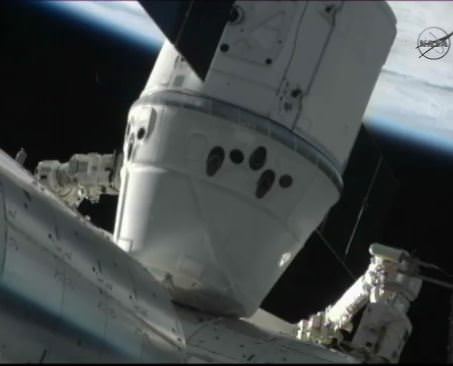
[/caption]
SpaceX is scheduled to launch the first of its 12 contracted cargo flights to the International Space Station in October, 2012. NASA Administrator Charles Bolden announced Thursday at Kennedy Space Center that SpaceX is now fully certified to ferry cargo to the space station. While the company’s Dragon capsule did bring cargo to the ISS during its initial flight in May, that was considered just a test flight. Now comes a series of ‘real’ cargo runs.
Bolden also announced some other commercial milestones under NASA’s Commercial Resupply Services Program that “progress toward a launch of astronauts from U.S. soil in the next 5 years,” he said.
“We’re working to open a new frontier for commercial opportunities in space and create job opportunities right here in Florida and across the United States,” Bolden said. “And we’re working to in-source the work that is currently being done elsewhere and bring it right back here to the U.S. where it belongs.”
Bolden also announced NASA partner Sierra Nevada Corp. has conducted its first milestone under the agency’s recently announced Commercial Crew integrated Capability (CCiCap) initiative. The milestone, a program implementation plan review, marks an important first step in Sierra Nevada’s efforts to develop a crew transportation system with its Dream Chaser spacecraft.
CCiCap is an initiative of NASA’s Commercial Crew Program (CCP) and an Obama administration priority. The objective of the CCP is to facilitate the development of a U.S. commercial crew space transportation capability with the goal of achieving safe, reliable and cost-effective access to and from the space station and low Earth orbit. After the capability is matured, it is expected to be available to the government and other customers. NASA could contract to purchase commercial services to meet its station crew transportation needs later this decade.
NASA Announces Winners in Commercial Crew Funding; Which Company Will Get to Space First?
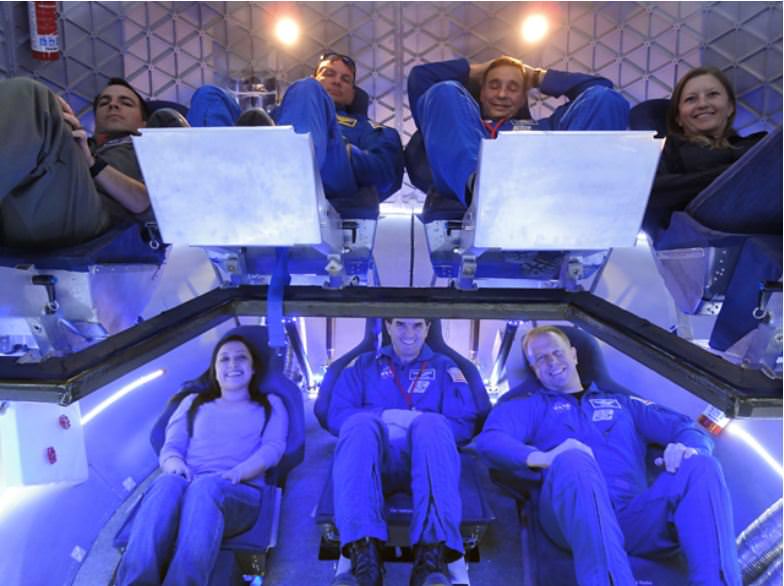
[/caption]
NASA announced today the winners of the third round of commercial crew development funding, called the Commercial Crew Integrated Capability (CCiCap). This will ultimately allow commercial space companies to be able to provide commercial human spaceflight services for both NASA and other commercial customers. The winners are SpaceX ($440 million), Boeing ($460 million) and Sierra Nevada Corporation ($212.5 million). NASA said these awards will enable a launch of astronauts from U.S. soil in the next five years.
NASA’s Ed Mango said that the differences in the amount each company received was not a difference of two companies getting “full” awards and one getting a half award, but each company negotiated how much work they could get done in the 21-month period that this award covers.
NASA wants to have at least one commercial company able to bring astronauts to and from the International Space Station by 2017, but the three winning companies said they can either meet or beat that deadline, with optimal funding.
During conference calls with reporters, SpaceX’s Elon Musk said his company is shooting for a demonstration flight in mid-2015, with the anticipated Boeing says it can do crewed test flight in late 2016, assuming optimal funding, and Sierra Nevada said they will likely start their operations in 2016 or 2017.
Musk said the cost of getting to first crewed SpaceX flight to ISS would be about $1 billion. The first orbital demo crewed flight probably wouldn’t go to the space station, but would on a subsequent flight, about a year later.
SpaceX is well ahead of the other two companies because of their work – and success – with the unmanned Dragon capsule, which traveled to and from the ISS earlier this year, and was the first commercial spacecraft to be berthed to the Station. For the most part, SpaceX has paid their own way during the development of Dragon and their crewed version, the 7-passenger DragonRider, spending about $300 million of their own money in addition to about $75 million from NASA.
The plans for DragonRider have it making its return landing in the ocean, but SpaceX has completed the development of the SuperDraco thruster, which will mainly be used as a launch abort system but also allow for powered landings on land.
Boeing’s CST-100 capsule, also capable of carrying a crew of seven, has met many milestones, such as drop tests and parachute tests. Like Dragon, the spacecraft will initially land in the ocean, but the company hopes to allow for land-based landings later on. It will launch on an Atlas V rocket.
Sierra Nevada’s Dream Chaser spacecraft, perhaps the most fascinating of the trio of commercial spacecraft, looks like a mini-space shuttle, and comes from the line of NASA experimental vehicles, the HL-20. It can serve as both a transport vehicle and a rescue vehicle from the ISS, and has the capability to land at almost any commercial airport within six hours of leaving the ISS. Dream Chaser will also launch on an Atlas V.

“Today, we are announcing another critical step toward launching our astronauts from U.S. soil on space systems built by American companies,” NASA Administrator Charles Bolden said at the agency’s Kennedy Space Center in Florida. “We have selected three companies that will help keep us on track to end the outsourcing of human spaceflight and create high-paying jobs in Florida and elsewhere across the country.”
The Commercial Crew Program is a competitive program where commercial companies develop and build vehicles to meet NASA’s requirements, and when fixed milestones are met, NASA provides funding.
NASA says the objective of the CCP is to facilitate the development of a U.S. commercial crew space transportation capability with the goal of achieving safe, reliable and cost-effective access to and from the International Space Station and low Earth orbit.
“For 50 years American industry has helped NASA push boundaries, enabling us to live, work and learn in the unique environment of microgravity and low Earth orbit,” said William Gerstenmaier, associate administrator for NASA’s Human Exploration and Operations Mission Directorate. “The benefits to humanity from these endeavors are incalculable. We’re counting on the creativity of industry to provide the next generation of transportation to low Earth orbit and expand human presence, making space accessible and open for business.”
Of course, NASA is also working to develop the Orion Multi-Purpose Crew Vehicle (MPCV) and the Space Launch System (SLS), a crew capsule and heavy-lift rocket to provide transportation to distant destinations like the Moon, asteroids or ultimately Mars.
For more details on the program see: http://www.nasa.gov/offices/c3po/home/

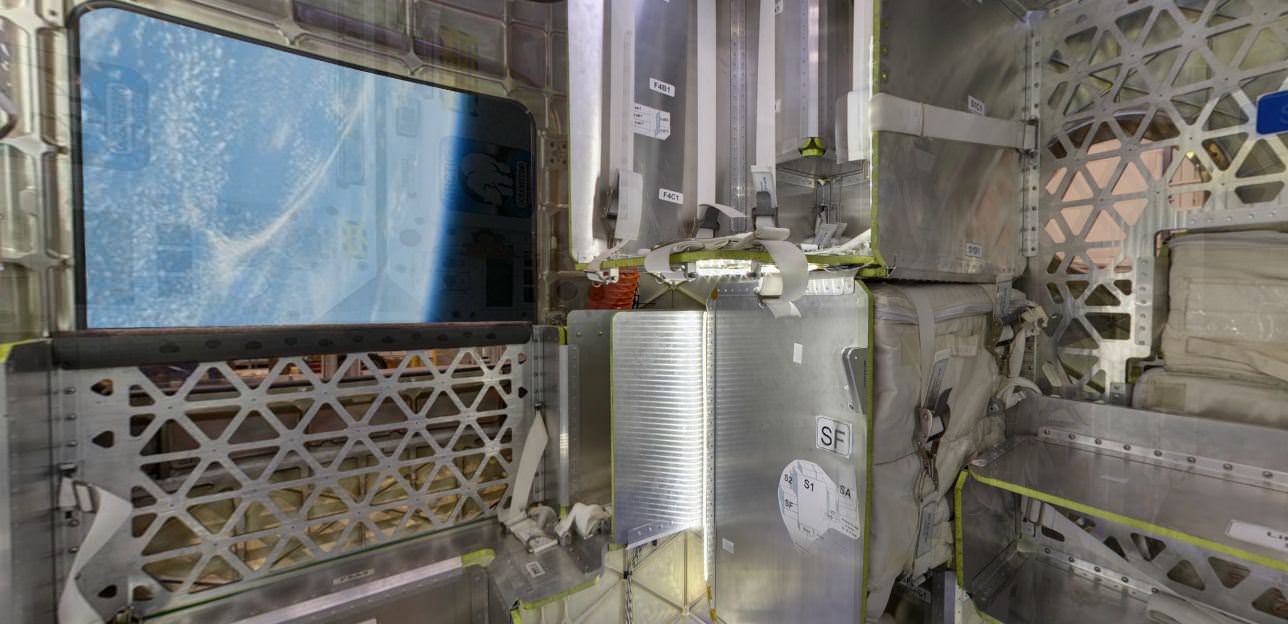
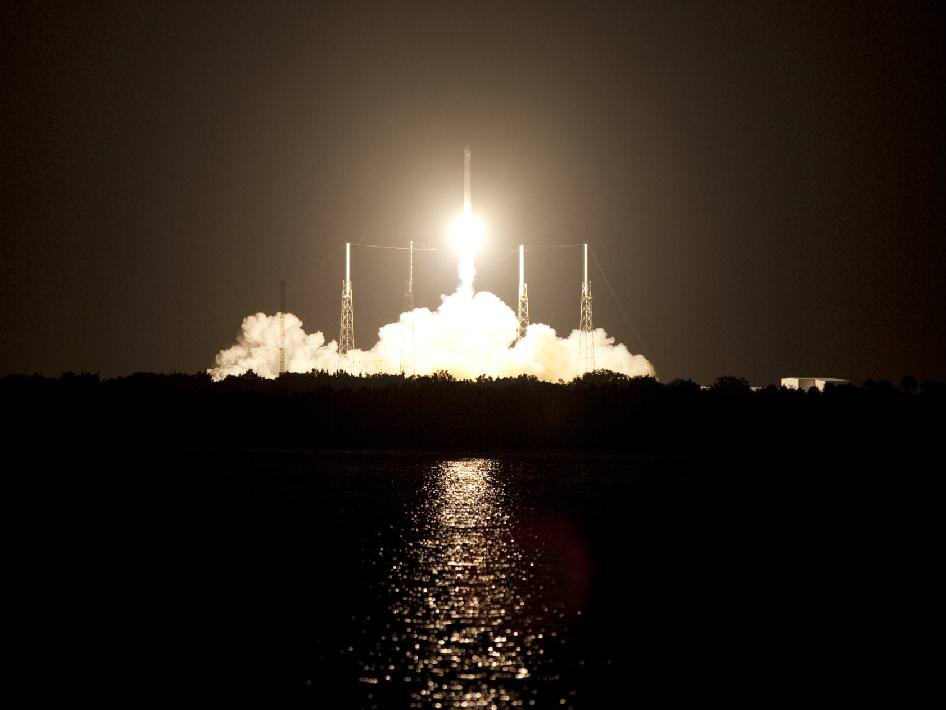
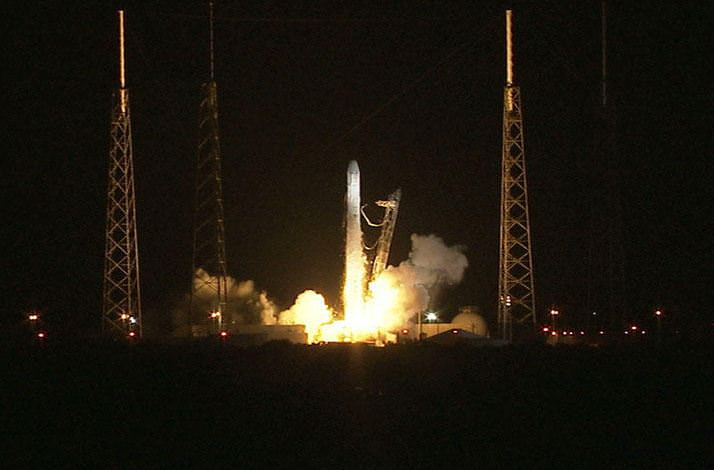
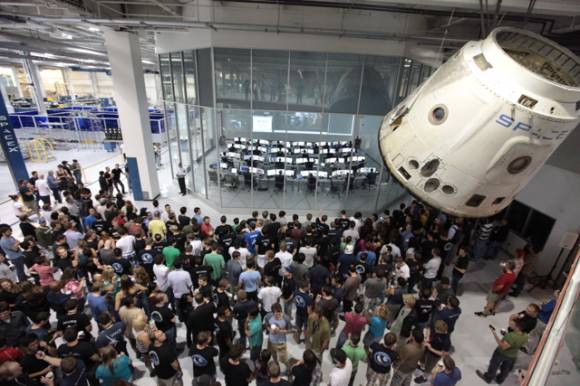



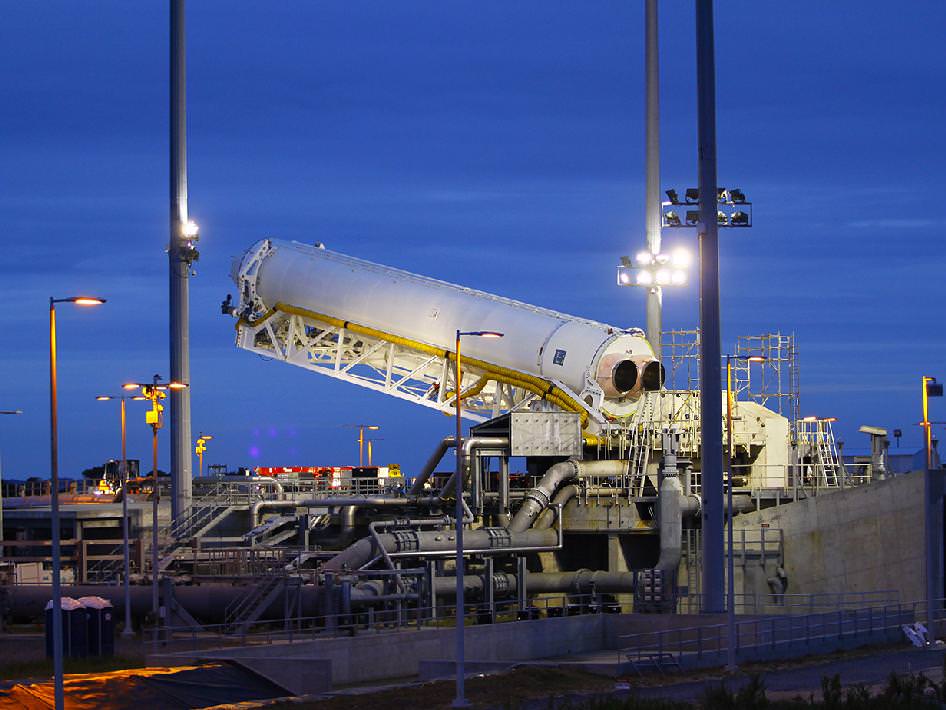
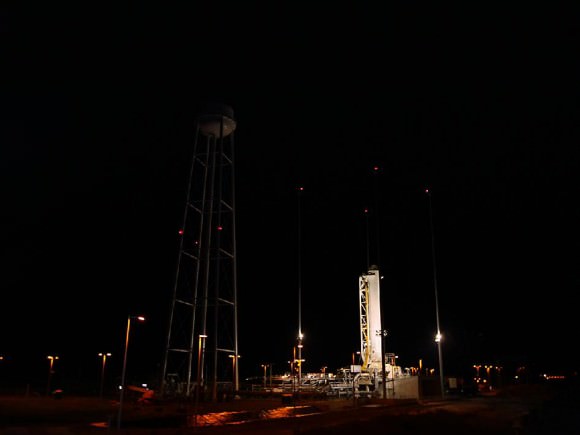
![A4IAv1HCQAEY5lM[1]](https://www.universetoday.com/wp-content/uploads/2012/10/A4IAv1HCQAEY5lM1-580x429.jpg)
